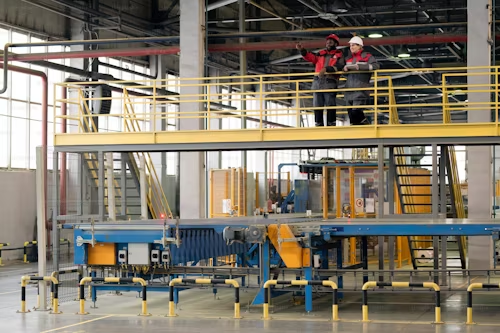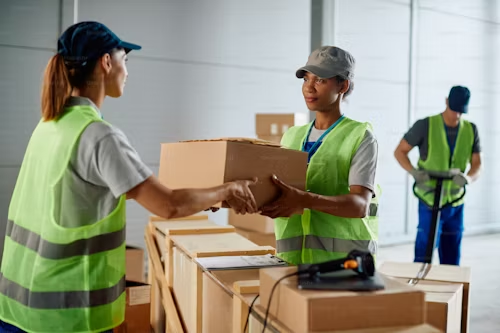Developing a manufacturing facility in Latvia necessitates making use of special opportunities brought about by strategic positioning, a talented workforce, a supportive business environment, and access to international markets. This article presents a thorough checklist of several factors that are essential to setting up a successful manufacturing facility in Latvia.

Optimal location and infrastructure
Choose the best location in Latvia taking into account market accessibility, utilities accessibility, proximity to raw resources, and transportation options. Make that the current infrastructure supports efficient, flawless manufacturing operations by evaluating it.
Comprehensive market research
To understand the demand for your products both domestically and abroad, conduct a thorough market analysis. Analyze customer preferences, market trends, and the competitive environment. Analyze the market potential for your products in Latvia and look into export options.
Understanding regulatory requirements
Gain a thorough understanding of Latvia’s regulatory framework, including labor laws, environmental laws, health and safety standards, and industry-specific compliance, to be able to navigate the country’s regulatory requirements. Obtain from the appropriate authorities the requisite licenses, permits, and approvals.
Acquisition of qualified labor
Utilize Latvia’s qualified labor by hiring experts in the manufacturing, engineering, and technical sectors. To access a talent pool, work with regional educational institutions and training facilities. Encourage professional development and ongoing learning to keep skilled workers.
Efficient supply chain and logistics
Assess the dependability and efficiency of Latvia’s regional supply chain network. Find trustworthy vendors for equipment, parts, and raw materials. To ensure efficient inbound and outgoing logistics, evaluate the logistics infrastructure, available modes of transportation, and customs procedures.
Financial planning
Create a thorough financial plan that takes into account the costs of the infrastructure, the equipment purchases, the personnel expenditures, the purchasing of raw materials, and the ongoing operations requirements. To support the establishment and expansion of the facility, look into financial aid alternatives such as government grants, incentives, and loans.
Automation and technological advancements
To improve productivity, boost efficiency, and keep a competitive advantage, embrace advanced manufacturing technologies. Spend money on cutting-edge equipment, robots, and digital systems that improve production, quality assurance, and cost-effectiveness.
Strong quality control and certifications
Adopt rigorous quality control procedures to guarantee that products adhere to the highest standards. To increase credibility and ease entry into international markets, adhere to quality management systems and certifications that are widely recognized, such as ISO. Encourage an excellence and continuous improvement culture.
Sustainability and environmental stewardship
Reduce the environmental effect of manufacturing activities by incorporating sustainable techniques. Utilize resource management techniques, waste reduction measures, and energy-efficient technologies. Respect environmental laws and certifications to demonstrate your dedication to sustainability.
Cooperative relationships
Create strategic partnerships with regional suppliers, business organizations, academic institutions, and governmental organizations. To improve competitiveness, gain access to information, and take advantage of networks, work together on research and development projects, consider joint ventures, and take part in industry-driven projects.
Government support and incentives
Investigate the government’s subsidies, incentives, and assistance initiatives for new manufacturing businesses in Latvia. To gain access to resources and financial aid intended to promote manufacturing expansion, become involved with governmental organizations and investment promotion organizations.
Intellectual property protection
Be aware of Latvia’s IP environment and take precautions to safeguard your inventions and technologies. To protect your goods, methods, and branding, register trademarks, patents, and copyrights. To achieve thorough protection, consult with IP experts.
Supplier diversity
Enlist Latvian suppliers and manufacturers to diversify your supply chain. Shorter lead times, cost savings, and a better grasp of the local market dynamics are just a few benefits of forming partnerships with local partners.
Resilience and risk management
To deal with any disruptions to your manufacturing operations, develop a strong risk management strategy. Analyze the risks associated with market volatility, natural disasters, geopolitical concerns, and supply chain disruptions. To reduce risks and preserve operations, put business continuity plans and other measures in place.
Training and skills development
Invest in training initiatives to upgrade the skills of your workers and boost production. Work in partnership with trade schools, colleges, and business organizations to offer specialized instruction in manufacturing processes, technology application, and quality control.
You can also find these articles helpful
Manufacturing business ideas
Open a fast-food restaurant in Latvia
Guide on buying a business







